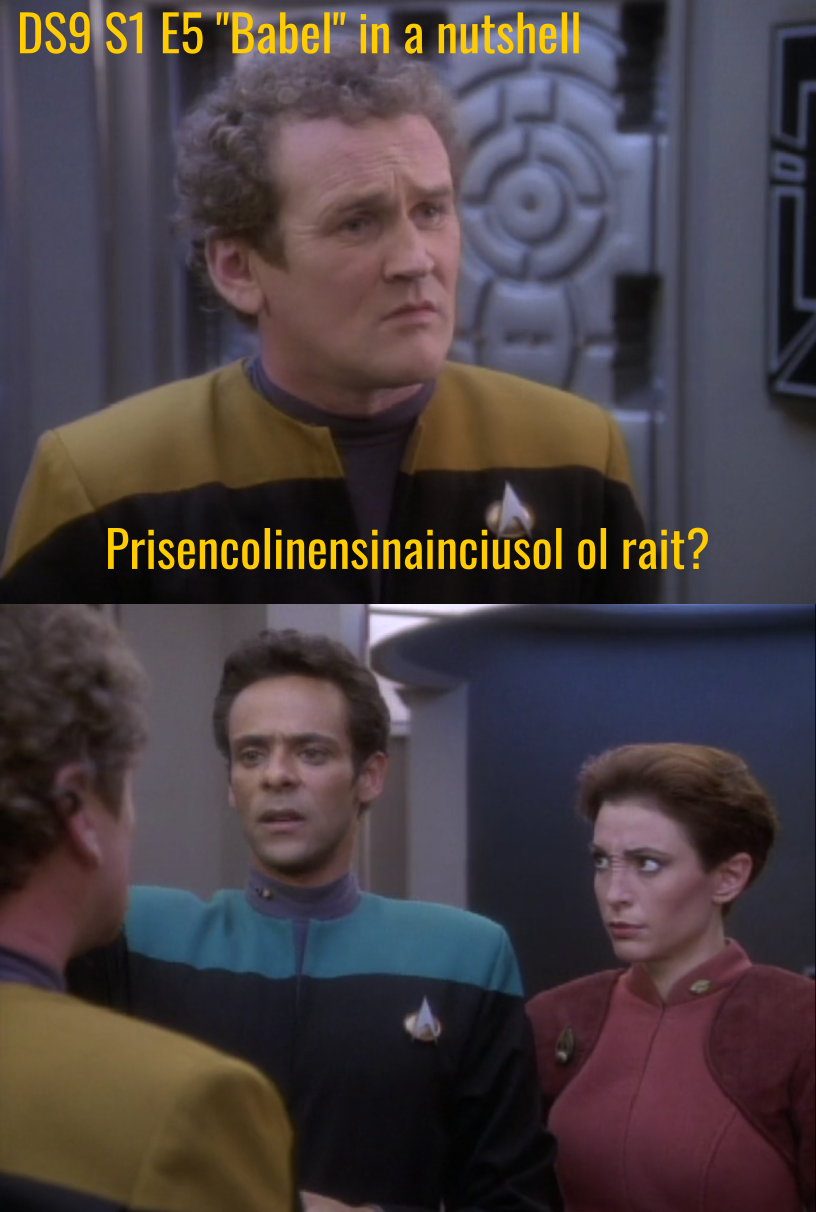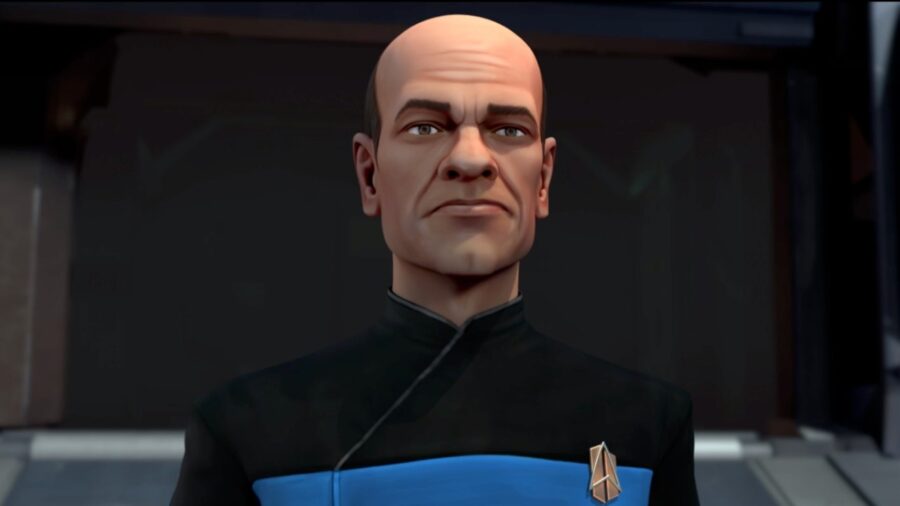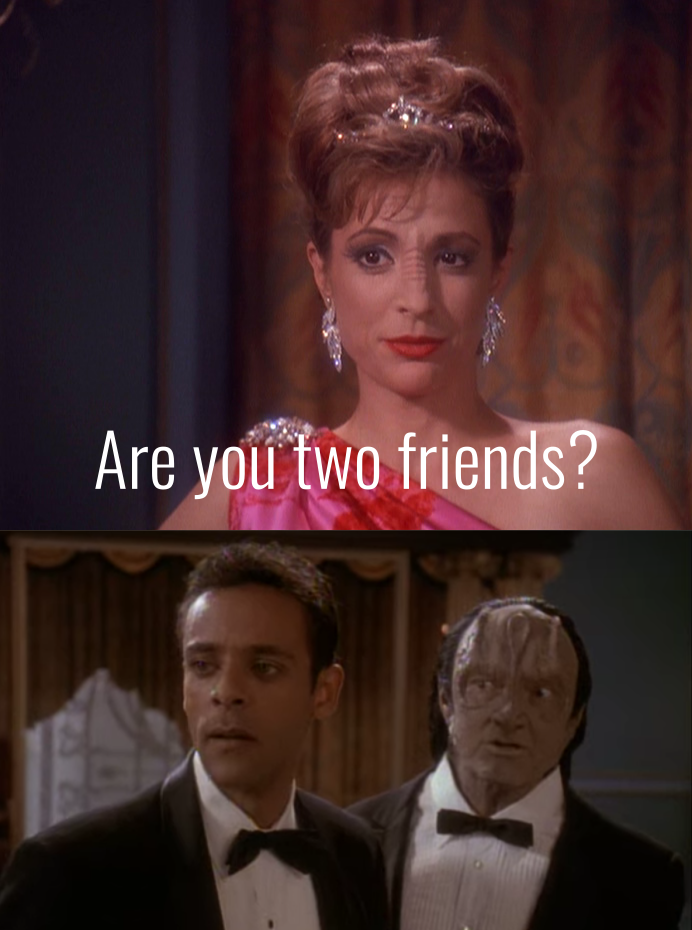Actually, the fact Boimler has one suggests they made an iteration for the early 2380s uniform, meaning they kept making them for a while.
What I meant is technically, in the time frame of Academy, assuming we can take their word that this is the "normal" Doctor, the VOY:Living Witness Doctor should still be alive as well.
Depending on how you count it, both will be the same age. It would be incredibly funny if both versions of the Doctor met.
Both of them.
Actually, imagine a William Boimler moment between Alpha Quadrant Doctor and Delta Copy Doctor.
I spent 4-6 hours the other day trying to figure out the equivalent of Hello World for a MediaWiki parser function extension.
In theory, they have a quick start guide, but that documentation has so many errors, and I spent ages jumping between PHP and a JSON configuration file I barely understood.
At least it's working now. Now time to figure out how the heck to properly interact with the MediaWiki database!
(Perhaps once I'm a bit more confident in MediaWiki development, I'll see if I can tidy up some that documentation.)
Yeh. They really did C++ unnecessarily dirty.
I'd take a well-maintained native package for my distro over a Flatpak, but sometimes, a Flatpak is just the the easiest way to get the latest version of an application working on Debian without too much tinkering - not always no tinkering, but better than nothing.
This is especially true of GIMP - Flatpak GIMP + Resynthesizer feels like the easiest way to experience GIMP these days. Same with OBS - although I have to weather the Flatpak directory structure, plugins otherwise feel easier to get working than the native package. The bundled runtimes are somewhat annoying, but I'm also not exactly hurting for storage at the moment - I could probaby do to put more of my 2 TB main SSD to use.
I usually just manage Flatpaks from the terminal, though I often have to refresh myself on application URLs. I somewhat wish one could set nicknames so they need not remember the full name.
A good one. I’ve also made an attempt before with this during the Patrick Starship Enterprise fiasco/masterpiece:

I should do one without SpongeQuimp, though.
And that is still largely true - I’m still running XFCE with xorg on Debian, and I think the only issue I’ve had was Waydroid.
Will there come a day where what you say is true? Yes.
However, right now, a more apt example to convey your point is systemd; that’s true for most distros with a lot of community support. Even then, its hold isn’t absolute - Alpine seems like the most livable non-systemd distro, though I could be wrong.
As I’ve commented elsewhere on this post and others have said, this is a change that affects pretty much no one. I didn’t even know MBR (legacy BIOS) partition tables on UEFI boot was possible, honestly.
By no longer putting in the effort to maintain this bit that no one uses, work can be put to something someone uses.
Also, with Linux, specific distros can get encrapified (kind of happened to Ubuntu), but as others have said, there’s usually always another distro to jump to at worst.
For those panicking about it, this is not something you need to worry about. Here’s what this actually does:
Enforce the use of GPT partition tables for all UEFI-based Fedora installations for x86 architecture. This removes support for installing Fedora in UEFI mode on MBR-partitioned disks on x86 systems
You probably have already been using GPT on your UEFI system since you had a UEFI system. Even if you somehow were using MBR, this probably;
- Won’t break existing installations, as it’s merely support for installs of this type
- Would not be a problem even if somehow the broke existing installs, as it’s not difficult to convert MBR to GPT.
As much as I resonate with the issues, in this case, this isn’t what they’re doing at all.
This drops support only for UEFI on the MBR partition scheme typically used by a BIOS setup, which I honestly didn’t even know was possible.
This ends support for no hardware - almost all distro installations on UEFI have defaulted to GPT partition tables for a long time.







I mean, I’m pretty sure it says at the end of the episode the Doctor decided to try and find what ended up happening to Voyager after he set the record straight.